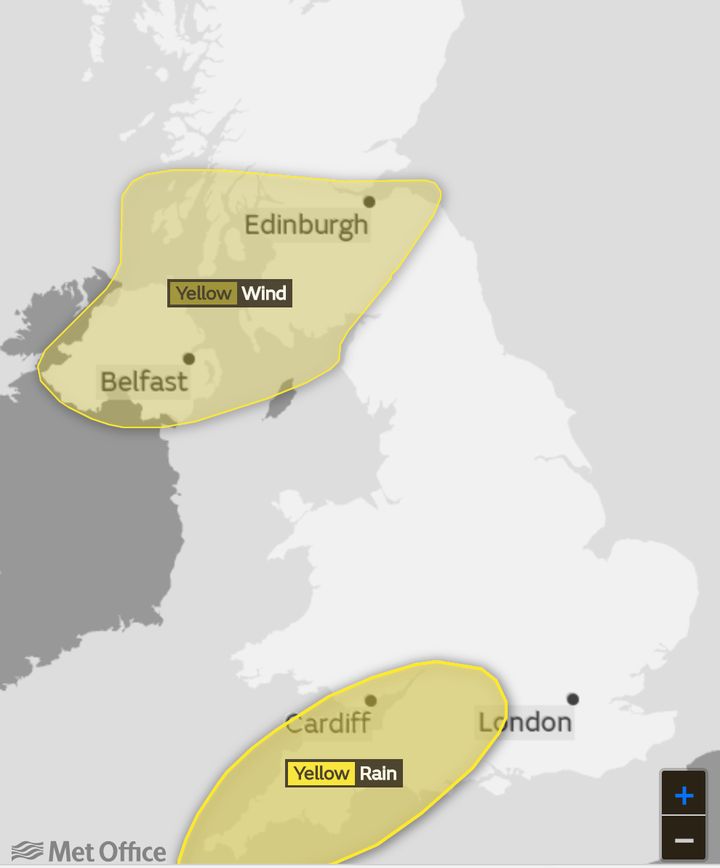Following a week of picturesque, snowy weather you can expect a wetter and windier transition into the New Year thanks to Storm Dylan.
Winds of up to 70-80mph are forecast to herald the storm which is due to arrive between Saturday night and Sunday morning, and which is expected to affect the Republic of Ireland and southern Scotland most severely.
Named by Met Eireann, the storm consists of an area of low-pressure arriving from the Atlantic and has prompted the Met Office to issue a yellow wind warning for Sunday from midnight until 3pm.
Rain and snow will slowly gradually clear eastwards on Friday afternoon and strong winds and showers will follow but there will be brighter spells too.
Chief Forecaster for the Met Office Steve Ramsdale said: “Overnight into Saturday another band of rain will spread from the southwest. Across northern hills there are likely to be wintry showers, including snow. Conditions will become colder with icy patches likely ahead of the rain and snow. Weather warnings for ice are in place and people travelling should take note of potentially hazardous travelling conditions.”
After a quieter day on Saturday – when most places will be less cold than of late – further heavy rain and strong winds are expected Saturday night and into Sunday morning. Travelers are being warned to leave extra time for their journeys and there is a chance of tiles being blown off roofs.

Away from the effects of Storm Dylan, a yellow weather warning for rain is in place for southwest England and South Wales on Saturday night. The rain is expected to be heavy in places, causing possible transport disruption, due to surface water and spray, and the potential for localised flooding.
Looking ahead to the New Year period, Ramsdale added: “Colder and showery weather looks likely for New Year’s Eve and New Year’s Day will feature wintry showers in the north. Unsettled weather looks likely to continue through the first week of January with further bouts of milder wet and windy weather interspersed with colder bright but showery periods.”
